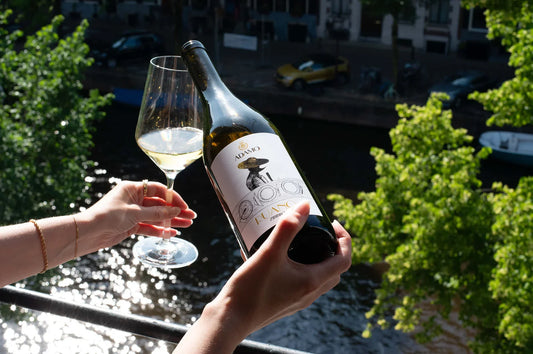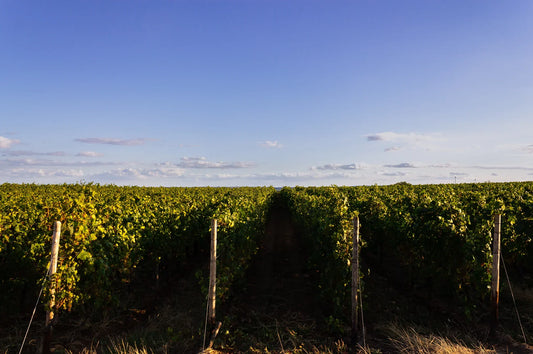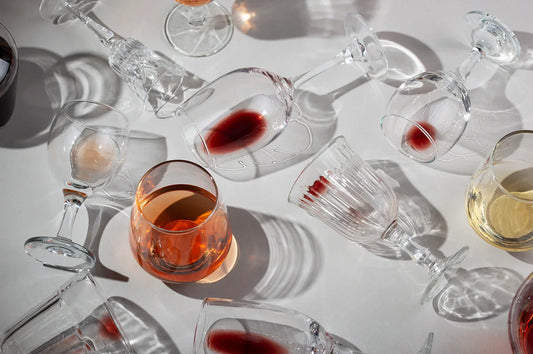Meet Franciacorta, the Sparkling Wine You Should be Drinking
Nestled in the rolling hills of Lombardy, just southeast of the enchanting Lake Iseo, lies the Franciacorta wine region. This relatively small area has been producing high-quality sparkling wines since the 1960s, using the same meticulous "metodo classico" (classic method) as the renowned Champagne region in France. Despite its outstanding quality and unique terroir, Franciacorta has remained somewhat under the radar in the global wine scene. But, that's beginning to change as sommeliers to casual drinkers alike begin to discover this fantastic wine and the beautiful vineyards it comes from.
Below, we explore the history, grapes, and style of Franciacorta, and discover why it deserves a place among the world's finest sparkling wines.
History and Geography
The history of winemaking in Franciacorta dates back centuries, with references to the region's wines found in the works of Virgil and Pliny the Elder. However, it wasn't until the late 1950s that the first sparkling wine bearing the Franciacorta name was created by the Berlucchi winery. This pioneering effort sparked a revolution in the region, with other producers soon following suit.
In 1967, Franciacorta was granted DOC (Denominazione di Origine Controllata) status, covering both sparkling and still wines. The local consortium, Consorzio per la tutela del Franciacorta, worked tirelessly to elevate the quality of the region's sparkling wines, lobbying for lower yields, gentler grape-pressing techniques, and the elimination of Pinot Grigio from the blends. These efforts paid off in 1995 when Franciacorta's sparkling wines were promoted to DOCG (Denominazione di Origine Controllata e Garantita) status, the highest level of Italian wine classification.
Spanning approximately 5,400 acres along the southern coast of Lake Iseo, the Franciacorta region benefits from a unique microclimate. The combination of cool air from the nearby Alps and the moderating influence of the lake creates ideal conditions for growing the grapes used in sparkling wine production. The area's well-drained, mineral-rich soils, formed by glacial activity, further contribute to the quality and character of Franciacorta wines.
Grapes and Winemaking: Strict Rules
Franciacorta sparkling wines are primarily made from Chardonnay, Pinot Noir, and limited amounts of Pinot Blanc. These are also grape varieties used in the production of Champagne, lending a familiar character to Franciacorta. The region adheres to strict regulations governing the quality of grapes, blending proportions, and aging requirements.
To be classified as Franciacorta, the wines must undergo a second fermentation in the bottle, following the "metodo classico" or “traditional method.” This process involves adding yeast to the base wine (cuvée) and aging the bottles for a minimum of 18 months for non-vintage wines, 30 months for vintage (millesimato), and an impressive 60 months for riserva wines. During this time, the bottles are regularly rotated (a process called riddling) to ensure maximum contact between the yeast and the wine, resulting in the development of fine bubbles and complex flavours.
Styles and Pairing
Franciacorta offers a range of styles to suit different tastes and occasions. The classic Brut is dry and crisp, with sharp, lively bubbles, while the Satèn (meaning "silk" in Italian) is a softer, more delicate expression of Franciacorta, made exclusively from Chardonnay and Pinot Bianco. Rosé Franciacorta, which must contain at least 15% Pinot Noir, adds a vibrant and fruity dimension to the lineup.
When it comes to pairing, a fruity sparkling wine like Franciacorta finds its perfect match in soft-ripened cheeses like Brie, dried fruits such as apricots and cherries, and roasted, salted nuts. The wine's crisp acidity and fine bubbles help cut through the richness of the cheese, while the fruity notes complement the sweetness of the dried fruits and the savory character of the nuts.
Comparing Franciacorta to Champagne and Prosecco
Although Franciacorta shares many similarities with Champagne in terms of grapes and production methods, there are some notable differences. The Franciacorta region's unique microclimate and soil composition impart a distinct character to its wines, setting them apart from their French counterparts. Additionally, the aging requirements for Franciacorta are generally longer than those for Champagne, resulting in wines with greater complexity and depth.
Prosecco, another famous Italian sparkling wine, is made using a different method called the Charmat or tank method, where the second fermentation occurs in large steel tanks rather than in individual bottles. This results in a lighter, fresher style of sparkling wine that is typically more affordable than Franciacorta or Champagne. While Prosecco is undoubtedly enjoyable, it lacks the complexity and finesse that Franciacorta offers.
Closing Thoughts
Franciacorta, with its rich history, unique terroir, and meticulous winemaking practices, is a hidden gem in the world of sparkling wine. Its ability to rival Champagne and home-country rival Prosecco in terms of quality while maintaining its own distinct identity makes it a compelling choice for wine enthusiasts seeking something special. As more people discover the delights of this Italian sparkling treasure, Franciacorta is poised to take its rightful place among the world's most celebrated bubbly wines. So, the next time you're in the mood for a festive toast, reach for a bottle of Franciacorta and experience the magic of Italy's best-kept sparkling secret.
Until next time, stay nosey!




